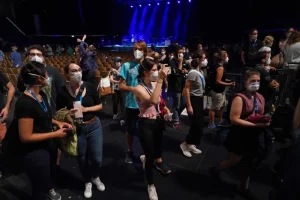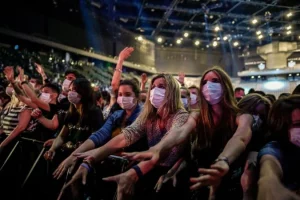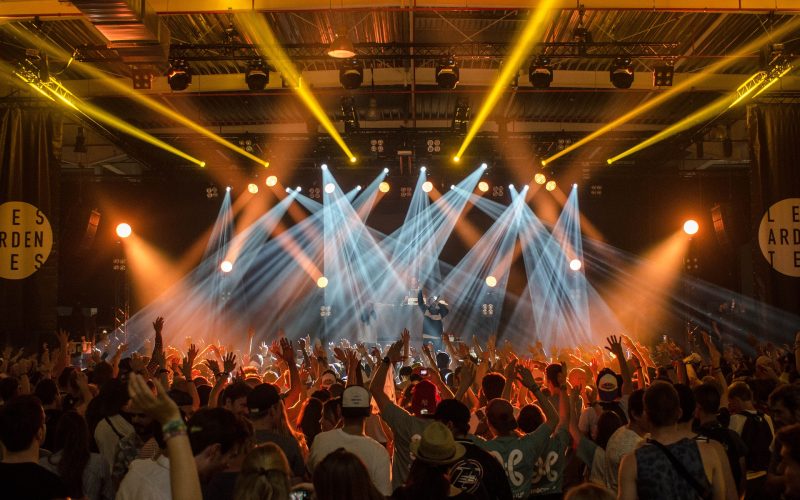Introduction
The COVID-19 pandemic has had a profound impact on various sectors globally, with the live events industry among the hardest hit. From concerts and theater productions to sports events and corporate gatherings, the pandemic has forced organizers to cancel or postpone numerous events, leading to significant financial losses and a shift in how live events are perceived and conducted. This article delves into the multifaceted impact of COVID-19 on the live events industry, exploring the challenges faced, the adaptations made, and the potential future of live events post-pandemic.
The Immediate Impact of COVID-19 on Live Events

-
Event Cancellations and Postponements
As COVID-19 spread rapidly in early 2020, governments worldwide implemented stringent measures to curb the virus’s transmission. Social distancing mandates, travel restrictions, and lockdowns led to the mass cancellation or postponement of live events. High-profile events such as the Tokyo 2020 Olympics, Coachella, and numerous music tours were either rescheduled or canceled entirely. The sudden halt of events resulted in substantial financial losses for event organizers, venues, performers, and associated industries.
-
Financial Implications
The financial ramifications were immediate and severe. The live events industry, which includes concerts, festivals, theater productions, and sports events, contributes billions of dollars to the global economy. The cancellation of events led to a sharp decline in revenue for venues, event organizers, and performers. Additionally, the ripple effect impacted related sectors such as hospitality, tourism, and transportation, exacerbating the economic downturn.
-
Employment and Workforce Challenges
The live events industry employs millions of people globally, including performers, technicians, event planners, and support staff. The pandemic-induced shutdown resulted in widespread job losses and furloughs. Freelancers and gig workers, who constitute a significant portion of the industry’s workforce, were particularly vulnerable, often lacking access to unemployment benefits and financial support.
Adaptations and Innovations

-
Virtual Events and Streaming
In response to the pandemic, the live events industry rapidly pivoted to virtual platforms. Concerts, theater productions, and conferences moved online, leveraging streaming technology to reach audiences. Platforms like Zoom, YouTube, and Twitch became popular venues for virtual events. While virtual events cannot fully replicate the experience of in-person gatherings, they provided a temporary solution and opened new avenues for audience engagement.
-
Hybrid Events
As restrictions eased, the concept of hybrid events—combining in-person and virtual elements—gained traction. Hybrid events allow for limited physical attendance while streaming the event to a broader online audience. This model offers flexibility and inclusivity, catering to those who prefer or need to attend remotely. Hybrid events are likely to remain a staple in the post-pandemic landscape, offering a blend of traditional and digital experiences.
-
Health and Safety Protocols
For in-person events, stringent health and safety protocols became essential. Measures such as reduced venue capacity, social distancing, mandatory mask-wearing, and enhanced sanitation were implemented to ensure the safety of attendees and staff. Event organizers also adopted contactless technologies for ticketing and payments to minimize physical contact.
Long-term Implications and Future Trends

-
Shifts in Consumer Behavior
The pandemic has altered consumer behavior, with audiences becoming more accustomed to digital experiences. This shift presents both challenges and opportunities for the live events industry. While there is a pent-up demand for in-person events, the convenience and accessibility of virtual and hybrid formats will likely influence future event planning.
-
Technological Advancements
The rapid adoption of technology during the pandemic has accelerated innovation in the live events industry. Augmented reality (AR), virtual reality (VR), and interactive streaming are becoming increasingly popular, enhancing the virtual event experience. These technologies offer immersive experiences that can complement in-person events, providing new ways to engage audiences.
-
Economic Recovery and Support
The road to recovery for the live events industry will require concerted efforts from governments, industry stakeholders, and communities. Financial support, grants, and stimulus packages can help mitigate the economic impact and facilitate the industry’s revival. Additionally, collaboration and innovation will be crucial in rebuilding a resilient and sustainable live events sector.
The Future of Live Events

-
Embracing Technology
The pandemic has accelerated the adoption of technology in the live events industry. From virtual and hybrid events to enhanced safety measures, technology will play a crucial role in the industry’s future. Innovations such as augmented reality (AR), virtual reality (VR), and artificial intelligence (AI) are expected to enhance live experiences, offering new ways for audiences to engage with events.
For example, AR and VR can create immersive environments that enhance the live experience, while AI can be used for personalized recommendations and crowd management. As technology continues to evolve, it will open up new possibilities for the live events industry to connect with audiences in creative and meaningful ways.
-
Sustainability and Inclusivity
The pandemic has also prompted a re-evaluation of sustainability and inclusivity in the live events industry. As events return, there is a growing emphasis on reducing environmental impact, from minimizing waste to sourcing sustainable materials. Additionally, the shift to virtual and hybrid events has highlighted the importance of accessibility, with organizers seeking to make events more inclusive for diverse audiences.
By embracing these values, the live events industry can build a more resilient and forward-thinking future, one that not only recovers from the pandemic but also evolves to meet the changing needs of audiences.
Conclusion
The COVID-19 pandemic has undeniably reshaped the live events industry, presenting unprecedented challenges and driving significant transformations. While the immediate impact was devastating, the industry’s adaptability and resilience have paved the way for new opportunities and innovations. As the world navigates the post-pandemic landscape, the live events industry will continue to evolve, blending traditional and digital experiences to meet changing consumer demands and ensure a vibrant future for live events.










